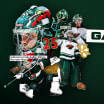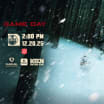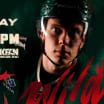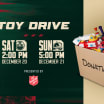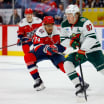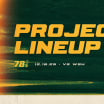ST. PAUL -- Few things in training camp get the juices flowing for a player more than Bruce Boudreau's day one skate test.
Days, even weeks, before hand, many players begin practicing the test on their own in an effort to be prepared -- or to simply gain confidence -- before the big day.
Friday was that day for nearly the entirety of the 69 players on the Wild's training camp roster. Only goaltenders, players that participated in the Traverse City Prospects Tournament and Mikko Koivu were exempt from the test.
Skating test is the talk of training camp
Post-practice conditioning drill has been a staple of Wild coach's camp for more than a decade
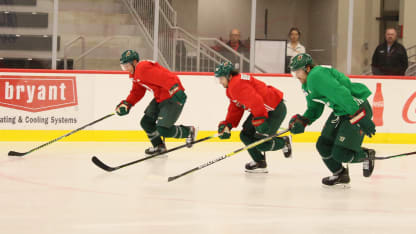
Bruce Boudreau reacts after day 1 skate
The Skate Test




